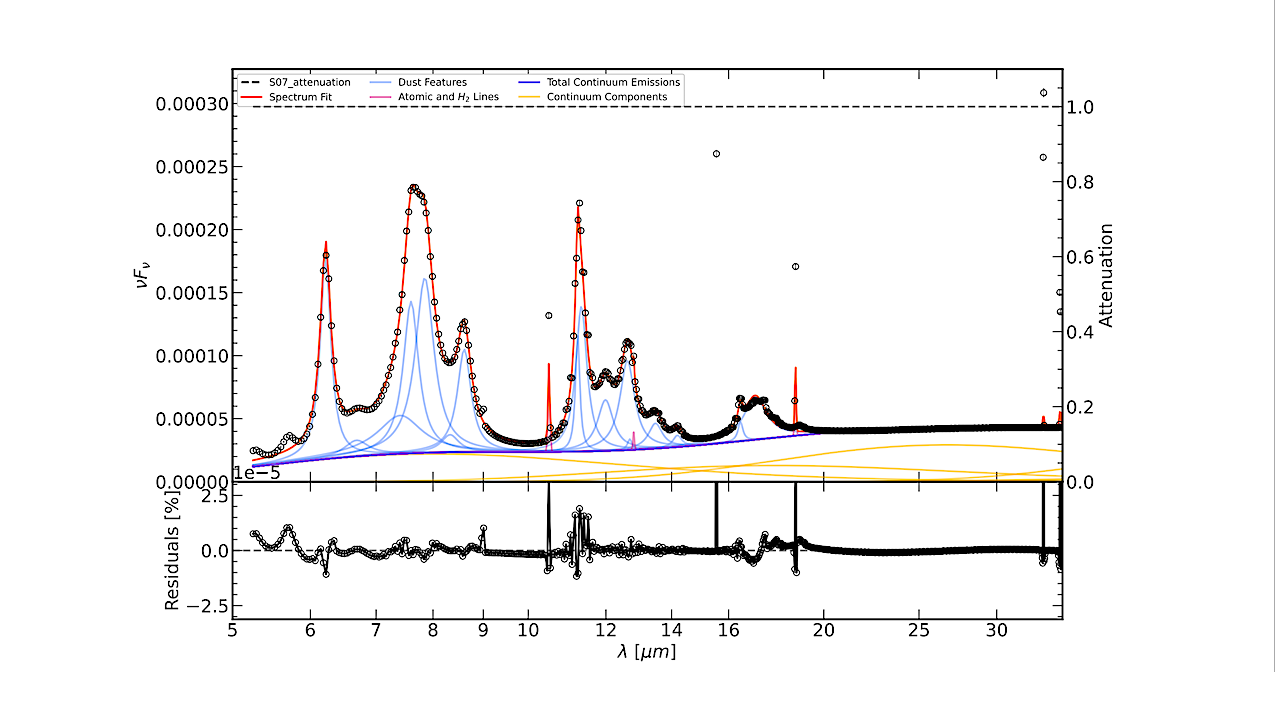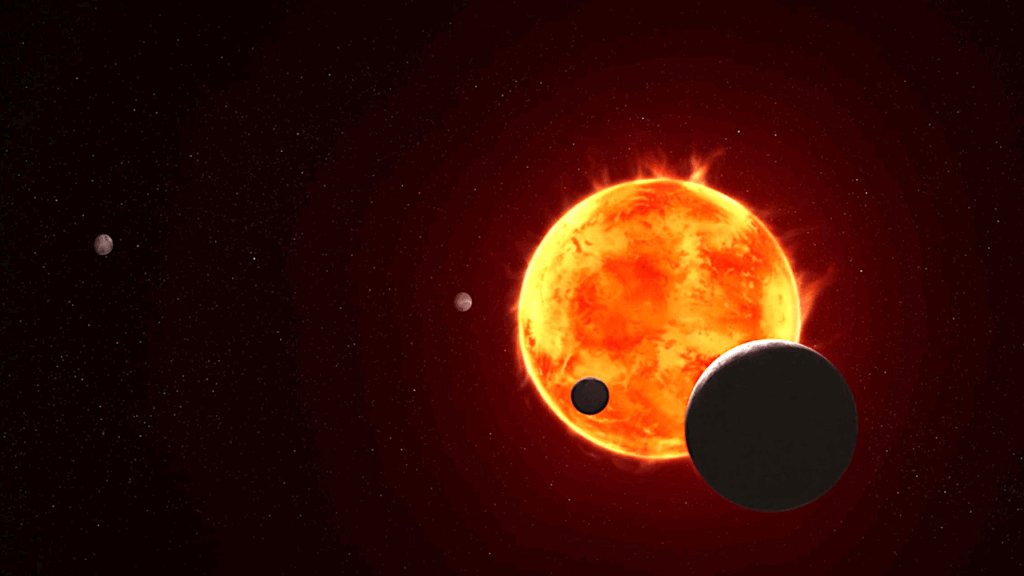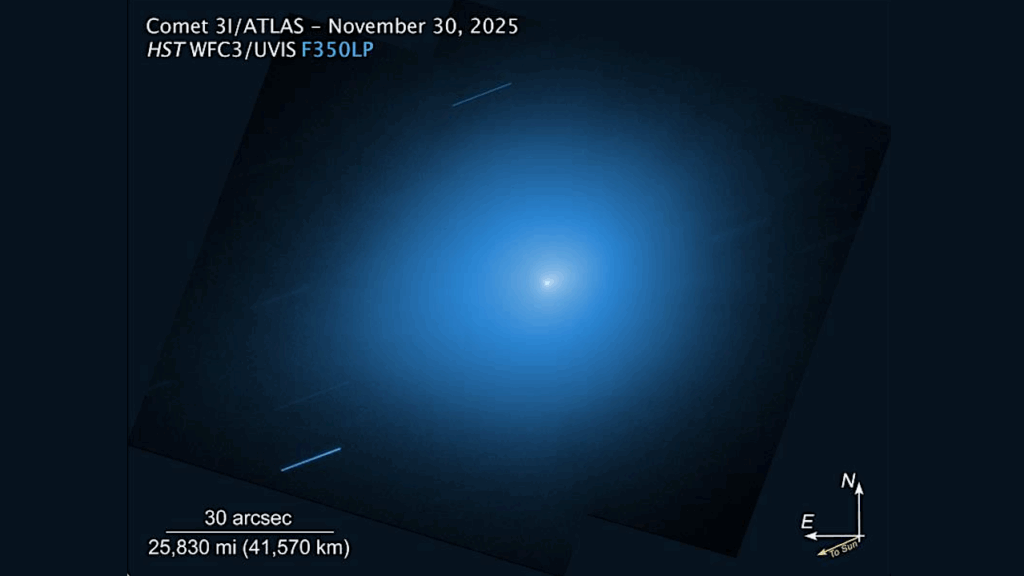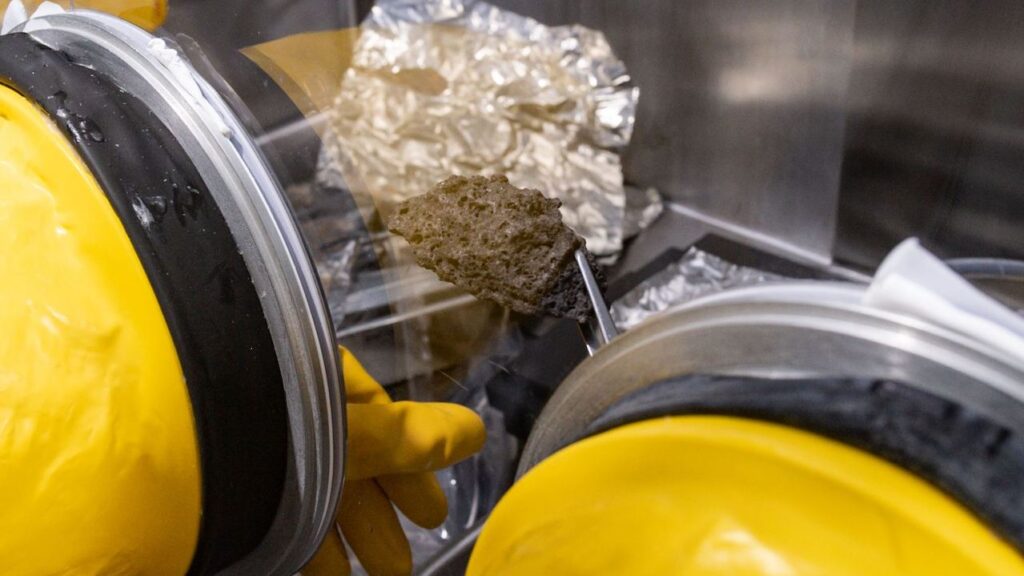The Calibration of Polycyclic Aromatic Hydrocarbon Dust Emission as a Star Formation Rate Indicator in the AKARI NEP Survey

Polycyclic aromatic hydrocarbon (PAH) dust emission has been proposed as an effective extinction-independent star formation rate (SFR) indicator in the mid-infrared (MIR), but this may depend on conditions in the interstellar medium.
The coverage of the AKARI/Infrared Camera (IRC) allows us to study the effects of metallicity, starburst intensity, and active galactic nuclei on PAH emission in galaxies with fν(L18W)≲19 AB mag. Observations include follow-up, rest-frame optical spectra of 443 galaxies within the AKARI North Ecliptic Pole survey that have IRC detections from 7-24 μm.
We use optical emission line diagnostics to infer SFR based on Hα and [O II]λλ3726,3729 emission line luminosities. The PAH 6.2 μm and PAH 7.7 μm luminosities (L(PAH 6.2 μm) and L(PAH 7.7 μm), respectively) derived using multi-wavelength model fits are consistent with those derived from slitless spectroscopy within 0.2 dex. L(PAH 6.2 μm) and L(PAH 7.7 μm) correlate linearly with the 24 μm-dust corrected Hα luminosity only for normal, star-forming “main-sequence” galaxies.
Assuming multi-linear correlations, we quantify the additional dependencies on metallicity and starburst intensity, which we use to correct our PAH SFR calibrations at 0<z<1.2 for the first time.
We derive the cosmic star formation rate density (SFRD) per comoving volume from 0.15≲z≲1. The PAH SFRD is consistent with that of the far-infrared and reaches an order of magnitude higher than that of uncorrected UV observations at z∼1. Starburst galaxies contribute ≳0.7 of the total SFRD at z∼1 compared to main-sequence galaxies.
Helen Kyung Kim, Matthew A. Malkan, Toshinobu Takagi, Nagisa Oi, Denis Burgarella, Takamitsu Miyaji, Hyunjin Shim, Hideo Matsuhara, Tomotsugu Goto, Yoichi Ohyama, Veronique Buat, Seong Jin Kim
Comments: Accepted for publication in The Astrophysical Journal. 50 pages, 27 figures, 9 tables
Subjects: Astrophysics of Galaxies (astro-ph.GA)
Cite as: arXiv:2408.14005 [astro-ph.GA] (or arXiv:2408.14005v1 [astro-ph.GA] for this version)
https://doi.org/10.48550/arXiv.2408.14005
Focus to learn more
Submission history
From: Helen Kim
[v1] Mon, 26 Aug 2024 04:15:12 UTC (1,698 KB)
https://arxiv.org/abs/2408.14005
Astrobiology, astrochemistry,








